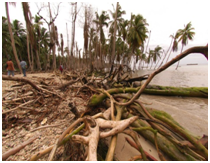|
Polity and Governance
Himachal Pradesh legalising cannabis cultivation

|
A five-member committee of MLAs has been formed to conduct a thorough study and submit a report within a month regarding legalising cannabis cultivation in the state.
About:
- The committee will conduct a thorough study about each and every aspect related to cannabis cultivation in the State.
- The committee will visit areas where illegal cultivation of cannabis takes place, and submit a report within a month.
- Only on the basis of the report will the government take a decision.
|
Uttarakhand became the first State in the country to legalise cannabis cultivation in 2017.
|
Significance:
- Cannabis cultivation would play a significant role in generating revenue for the State.
- Besides, it would be beneficial to patients as it has many medicinal properties.
Constitutional Provisions for Cannabis:
- The Parliament has defined cannabis in the Narcotic Drugs and Psychotropic Substances Act (NDPS), 1985.
- Under the law, a complete ban has been imposed on extracting the resin and flowers of the cannabis plant.
- But this law determines the method and extent of cultivation of cannabis for medicinal and scientific purposes only.
- Section 10 (a) (iii) of the Act empowers States to make rules regarding the cultivation of any cannabis plant, production, possession, transport, consumption, use, purchase, sale, and consumption of cannabis (except charas).
|
|
Environment
Revisit environmental nod for great Nicobar Island Project

|
The eastern bench of the National Green Tribunal (NGT) has ordered a stay on the ?72,000 crore Great Nicobar Island project and constituted a committee to revisit the environmental clearance granted by the Ministry of Environment, Forest and Climate Change (MoEF&CC).
About:
- The bench passed the order on April 3.
- A High-Powered Committee (HPC) headed by the Secretary, MoEF&CC has been asked to submit its proceedings within two months.
- The Great Nicobar Island Project:
- The Great Nicobar Island (GNI) is a mega project to be implemented at the southern end of the Andaman and Nicobar islands.
- The project includes an international container trans-shipment terminal, an international airport, township development, and a 450 MVA gas and solar based power plant over an extent of 16,610 hectares in the island.
- The main contentions in the appeals were that the project will have adverse impact on the rich biodiversity of the area and damage the habitats of endangered species. The Galathea bay in the island is a nestingground for birds and the project area is part of Coastal Regulation Zones-IA and IB
|
|
Science and Technology
HAL’s Third Light Combat Aircraft

|
Defence Secretary GiridharAramane inaugurated the third production line of the Light Combat Aircraft (LCA) set up by Hindustan Aeronautics Ltd. (HAL) at Nashik in Maharashtra.
About:
- He also handed over 10 Sukhoi-30 MKI aircraft repaired and overhauled (ROH) by HAL to the Indian Air Force.
- The new production line will enable the company to enhance LCA-MK1A production capacity from 16 to 24 aircraft per year.
- HAL’s Nashik Division has achieved peak overhaul capacity of 20 Su-30 aircraft per year despite having supply chain issues in current geopolitical situations.
- The Signal out Certificate (SOC) of the 100th ROH aircraft was handed over by SaketChaturvedi, CEO (MiG Complex), to Air Vice-Marshal Sarin.
- HAL plans to reduce the dependency on original equipment manufacturer (Russia) by indigenising majority of components required for ROH within the next three to five years.
|
|
Science and Technology
NASA launches device to monitor air pollution from space

|
A SpaceX Falcon 9 rocket successfully launched from Florida carrying a new NASA device that can track air pollution over North America.
About:
- The Tropospheric Emissions Monitoring of Pollution (TEMPO) instrument will allow scientists to monitor air pollutants and their emission sources from space more comprehensively than ever before, down to the neighbourhood level.
- NASA’s TEMPO project manager, the instrument will measure pollution and air quality across greater North America on an hourly basis during the daytime.
- A unique feature of TEMPO, which is about the size of a washing machine and has been described as a chemistry laboratory in space, is that it will be hosted on an Intelsat communications satellite in geostationary orbit.
How it is different?
- TEMPO will be able to measure atmospheric pollution down to a spatial resolution of 4 square miles (10 square kilometers), or neighborhood level.
- Existing pollution-monitoring satellites are in low Earth orbit, which means they can only provide observations once a day at a fixed time.
- Significance:
- By monitoring the effects of everything from rush-hour traffic to pollution from forest fires and volcanoes, NASA data will help improve air quality across North America and protect our planet.
|







